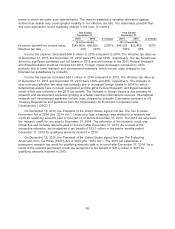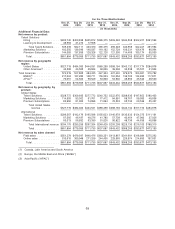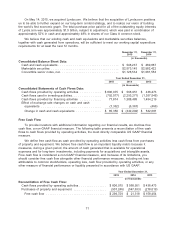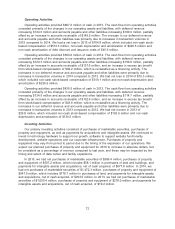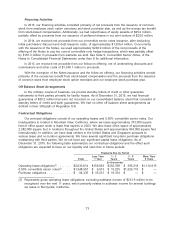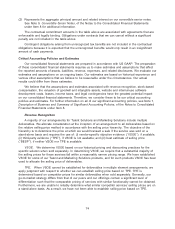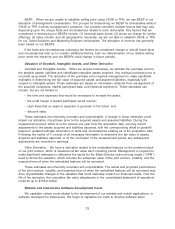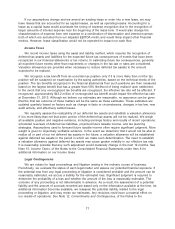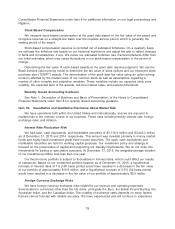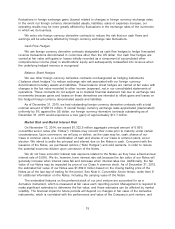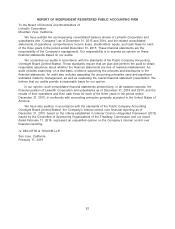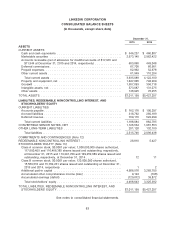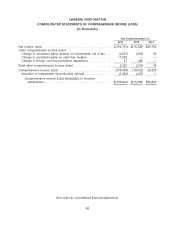LinkedIn 2015 Annual Report Download - page 78
Download and view the complete annual report
Please find page 78 of the 2015 LinkedIn annual report below. You can navigate through the pages in the report by either clicking on the pages listed below, or by using the keyword search tool below to find specific information within the annual report.planning stage efforts are successfully completed, management has authorized and committed project
funding, and it is probable that the project will be completed and the software will be used as intended.
Such costs are amortized on a straight-line basis over the estimated useful life of the related asset,
generally estimated to be two years. Costs incurred prior to meeting these criteria, together with costs
incurred for training and maintenance, are expensed as incurred and recorded within product
development expenses in our consolidated statements of operations. We exercise judgment in
determining the point at which various projects may be capitalized, in assessing the ongoing value of
the capitalized costs, and in determining the estimated useful lives over which the costs are amortized.
To the extent that we change the manner in which we develop and test new features and
functionalities related to our website and mobile applications, assess the ongoing value of capitalized
assets, or determine the estimated useful lives over which the costs are amortized, the amount of
website and internal-use software development costs we capitalize and amortize could change in future
periods.
Leases
From inception, all of our significant leases have been accounted for as operating leases.
Accounting for these leases requires significant judgment by management. Management determines
whether leases are accounted for as a capital or operating lease, or whether we are considered the
owner for accounting purposes, based on an evaluation of the specific contractual lease terms in
accordance with the authoritative accounting guidance on leases.
If the lease is considered a capital lease or we are considered the owner for accounting purposes,
we would record the property and a related capital lease obligation on our balance sheet. The asset
would then be depreciated over the lease term. Rent payments for these properties would be allocated
between interest expense and a reduction of the capital lease obligation.
If the lease is considered an operating lease, it is not recorded on our balance sheet and rent
expense is recognized on a straight-line basis over the lease term.
The most significant estimates used by management in accounting for property leases and the
impact of these estimates are as follows:
•Lease term. The lease term is used in determining whether the lease is accounted for as an
operating lease or a capital lease. A lease is considered a capital lease if the lease term is
equal to or exceeds 75% of the leased asset’s estimated economic life. The lease term is also
used in determining the depreciable life of the asset or the straight-line rent recognition period.
Increasing the lease term will increase the probability that a lease will be considered a capital
lease and will generally result in higher rent expense for an operating lease and higher interest
and depreciation expenses for a capital lease.
•Incremental borrowing rate. The incremental borrowing rate is primarily used in determining
whether the lease is accounted for as an operating lease or a capital lease. A lease is
considered a capital lease if the net present value of the lease payments is equal to or greater
than 90% of the fair market value of the property. We utilize the incremental borrowing rate to
discount the gross value of the minimum lease payments related to a contractual lease
obligation. We estimate this rate by considering the effective yield on our existing convertible
debt, interest swap rates comparable to the expected term of the lease payments and our credit
spread. Increasing the incremental borrowing rate decreases the net present value of the lease
payments.
•Fair market value of leased asset. The fair market value of leased property is generally
estimated based on comparable market data. Fair market value is used in determining whether
the lease is accounted for as an operating lease or a capital lease.
76


